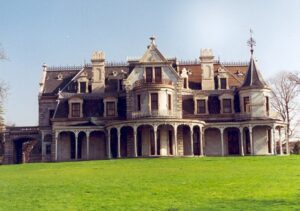
Welcome to Norwalk, CT
County: Fairfield
Population: 81,644
Square Miles: 36.3
Government: Mayor
Distance to Major Cities:
Boston: 151 miles
Hartford: 61 miles
New York City: 39 miles
Welcome to Norwalk, CT a diverse city of seacoast commerce, education and industry that graces Long Island Sound. Seen by some as a sub-urb of New York, or indeed a suburb of Stamford, Norwalk is a vibrant, growing city. The sixth largest city in Connecticut and the third largest in Fairfield County, Norwalk attract families and singles who want to enjoy its quiet beauty while still being close to what the entire Gold Coast of Connecticut has to offer.
Fishing and the farming of oysters has long been important to Norwalk, which was once nicknamed “Oyster Town.” Each September, Norwalk holds its annual Oyster Festival at the Norwalk harbor, similar to many state fairs. Norwalk encompasses 36 square miles, of which nearly a third is water. Its neighborhoods range from brick apartment buildings to college dorms, old factory streets and transformed ware-house lofts, yacht havens and golf courses; its people represent nations and languages from all around the world. Indeed, about 25% of Norwalk residents were born in another country and have come here to make their home. The Norwalk public school system website provides translations to many languages, so the city’s multinational population can access school information. Norwalk offers higher education with Norwalk Community College, Gibbs College and the University of Phoenix.
South Norwalk still retains much of its industrial seaport character and important employment base, while the hub called SoNo” is being transformed into a true walking city with busy shops and lively restaurants. The area’s centerpiece is the Maritime Aquarium, a major East Coast aquarium that specializes in displaying the marine life and ecology of Long Island Sound. East Norwalk and Saugatuck, favorite loca-tions for commuters, both offer easy access to Metro-North railroad for an easy commute to Stamford, New Haven and New York City. Also, public transportation is provided by the Norwalk Transit District’s “Wheels” buses throughout neighboring Norwalk and Westport.
Norwalk has a lot to offer to visitors and its residents! In addition to the popular Oyster Festival, the annual summer SoNo Arts Celebration and September’s Norwalk Boat Show are hugely popular with residents and visitors alike. Recreation abounds in ten beautiful parks, espe-cially the 190-acre outdoor Cranbury Park and scenic Calf Pasture Beach. A visitor’s favorite is the historic Lockwood-Mathews Mansion and museum, one of the oldest and finest surviving Second Empire style country houses ever built in the United States.
Great shopping is seen all along the entire Fairfield County coastline, where you can find large chains such as Old Navy, Wal-Mart, Kohl’s, Costco, and Home Depot. And you can shop until you drop at the new SoNo Collection Mall.
Norwalk is home to many corporate headquarters such as Dooney & Bourke, Kayak.com, Priceline.com and the famous Stew Leonard’s dairy store whose flagship store is located on Westport Avenue.
Norwalk real estate opportunities are certainly plentiful for renters, investors, seasoned or first-time homebuyers – come and see what we have.


Norwalk History
The Native American tribes here enjoyed a seacoast environment rich in shellfish and perfect for hunting and farming. European settlers found the same abundance, and purchased two large tracts in 1640-41, between Five Mile River and the Norwalk River, and “between the Norwalk and Saugatuck rivers and a day’s walk north from the sea.” The settlers proceeded to develop the continent’s most famous oyster industry and by 1880 Norwalk boasted the largest fleet of steam-powered oyster boats in the world.
During the 18th and 19th centuries, Norwalk expanded and neighboring towns were formed, redrawing old boundaries and incorporating some of the original land purchase. The Saugatuck River is now in Westport, and the Old South Norwalk reservoir is now within the borders of Wilton. Villages clustered around the Sound as well as the river valleys and many small glacial lakes. Industries that still leave their mark were silver mining (today’s Silvermine district), cattle and dairy farming (Calf Pasture Beach), and linen and rope manufacturing (Flax Hill). The whaling industry required powerful lighthouses, such as Sheffield Island Lighthouse, and lent its whaling boats to the Revolutionary and Civil War efforts. As the city grew, it added manufacturing and seacoast trade much as Stamford and other Connecticut cities had done.

